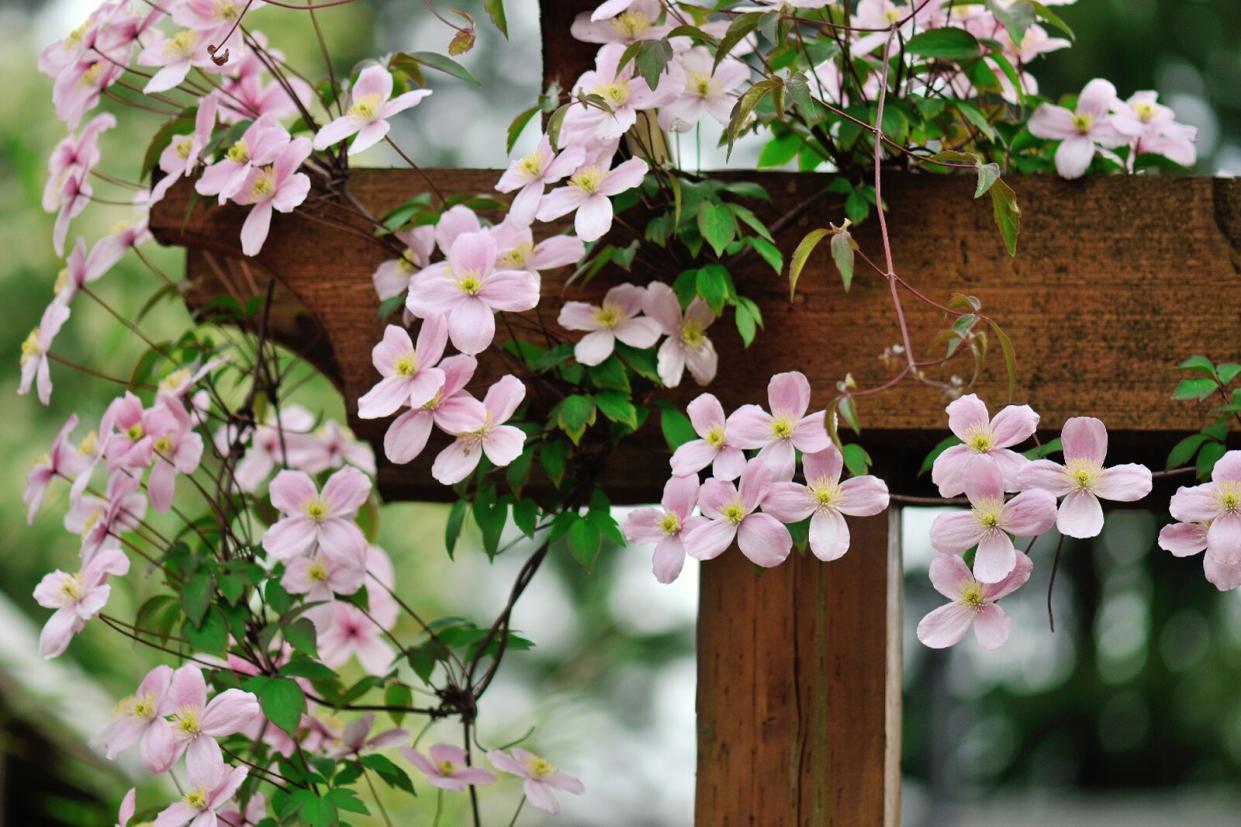How to Grow and Care for Clematis, a Climbing Vine That Adds Beauty to Trellises, Fences, and Pergolas

kongxinzhu / Getty Images
Clematis is a popular perennial climbing plant that produces colorful, winding blooms that are occasionally fragrant. Due to their vining nature, these plants can be added into your garden in a myriad of creative ways: You can plant them along an arbor, up a fence, or even on a freestanding trellis. Ahead, you'll discover everything you need to know about growing and caring for clematis, so you can introduce this show-stopping variety around your own landscape.
Related: How to Encourage Plants and Flowers to Climb
How to Choose a Clematis Variety
If you want to add clematis to your garden, you have plenty of options. Common varieties include 'Jackmanii,' 'Happy Purple Jack,' and 'Avant Garde'—all of which burst into bold pink or purple blooms. "There are hundreds of varieties," affirms Tyler Banken, the Indoor/Outdoor Plant Expert and Landscape Architect at Neverland, adding that clematis is a darling of the climbing plants group. "There are a few 'bushy' varieties of clematis, but the 'climbers' are more well-known!" If you're hoping to grow clematis to add a pop of color to your garden, Banken suggests choosing a few different varieties with staggered bloom times; this way, you can enjoy the plant type throughout the spring, summer, and fall.
How to Plant Clematis
While some clematis varieties can spend their lifespans inside pots or containers, Banken says they can also be planted directly into the ground. "When planting clematis, it's important that the soil is loosened up and that organic matter (like compost) is worked in to provide nutrients," he explains, noting that this plant also needs well-draining soil. "Loamy soil is best, as it allows for water absorption, but also provides adequate drainage." Clematis likes to keep its root system cool, too, which is why Banken advises planting seedlings slightly deeper into the soil to protect the crown; add mulch around the base for extra insulation. As for clematis' light requirements? A proclaimed "sun lover," this species needs at least six hours of sun per day, which is why planting or placing your vine in a full-sun location is key, notes Banken.
How to Care for Clematis
Once established, clematis plants are fairly low maintenance, says Banken. "When it comes to watering, clematis like to be kept moist—but they shouldn't sit in water," he shares. "Keep up on your watering schedule, especially when fertilizing." Climbing vines love fertilization, clarifies our expert, and clematis is no different: Feed your variety two to three times per year with an organic fertilizer designed for flowering plants. "Fertilize before the first bloom and again before the second round of blossoms pop later in the year," he says.
How to Prune Clematis
Is your clematis in need of a trim? Proceed with caution, since pruning these plants can be tricky. "Different varieties require different pruning tactics," explains Banken, noting that many experts break the climbing vine into three categories. "You can usually find the pruning instructions on the plant tag, but if not, you may have to do some research for your specific variety."
Certain species, like the clematis 'Montana' group and 'Alpina' variety, for example, prefer to bloom on old wood only in early spring. "For this type, pruning should consist only of removing dead or damaged stems and can be performed at any time," he says. The second iteration, on the other hand—comprised of varieties like 'Bee's Jubilee' and 'Nelly Moser'—will bloom in late spring on both new and old wood. "The general rule for this type is to do a light prune in late winter or early spring, when you see buds begin to swell," he says, adding that you should be sure to cut just above the buds. As for the third type? These plants, which included the aforementioned 'Jackmanii' and 'Viticella,' blossom on new wood in the summer or fall. "Pruning this type is easiest—take it almost all the way down to the ground!" says Banken. "This variety is hearty and will sprout each year from the crown." Despite these specific pruning variations, Banken has good news: You (typically) won't kill the plant if you get this process wrong.

